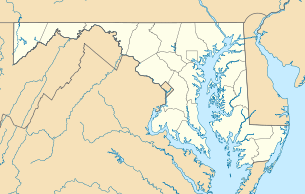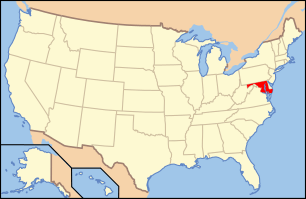Burrages End
|
Burrages End | |
|
| |
|
Burrages End, March 2010 | |
 | |
| Nearest city | Lothian, Maryland |
|---|---|
| Coordinates | 38°47′59″N 76°35′47″W / 38.79972°N 76.59639°WCoordinates: 38°47′59″N 76°35′47″W / 38.79972°N 76.59639°W |
| Architect | unknown |
| Architectural style | No Style Listed |
| Governing body | Private |
| NRHP Reference # |
73000897 [1] |
| Added to NRHP | April 11, 1973 |
Burrages End is a historic home near Lothian, Anne Arundel County, Maryland, United States. It is a small 1 1⁄2-story frame house with gambrel roof. The site is noteworthy for containing a number of buildings from the late 1700s or early 1800's. The house was constructed c. 1780, replacing an earlier house on the site, according to a 1982 study by the Architectural Research Department of the Colonial Williamsburg Foundation, presumably by Col. John Weems who purchased the property in 1764. Weems was the construction contractor for the 1762-65 St. James' Church 3/4 mile to the south. At Weems' death in 1794, Burrages End was sold to Thomas Sellman and remained in that family's hands until 1946. A Weems-Sellman cemetery is on site.
Historic outbuildings include a slave quarter and a tobacco barn. In the late 1700s, Major John Welsh built a hall-and-parlor plan house with a "new hall" addition, both replaced c. 1780. "Although often assigned a late 17th century date, the present dwelling is a later house, built c. 1780." [2] The property was patented in 1665 to John Burrage, who sold it to Welsh in 1668. [3]
Burrages End was listed on the National Register of Historic Places in 1973.[1]
References
- ↑ 1.0 1.1 "National Register Information System". National Register of Historic Places. National Park Service. 2008-04-15.
- ↑ Ware, Donna (1990). Anne Arundel's Legacy: The Historic Properties of Anne Arundel County. Office of Planning and Zoning, Anne Arundel County, Maryland, US. pp. 27, 136.
- ↑ "Maryland Historical Trust". Burrages End, Anne Arundel County. Maryland Historical Trust. 2008-11-21.
External links
- Burrages End, Anne Arundel County, including photo from 1975, at Maryland Historical Trust
| |||||||||||||||||||||||||

